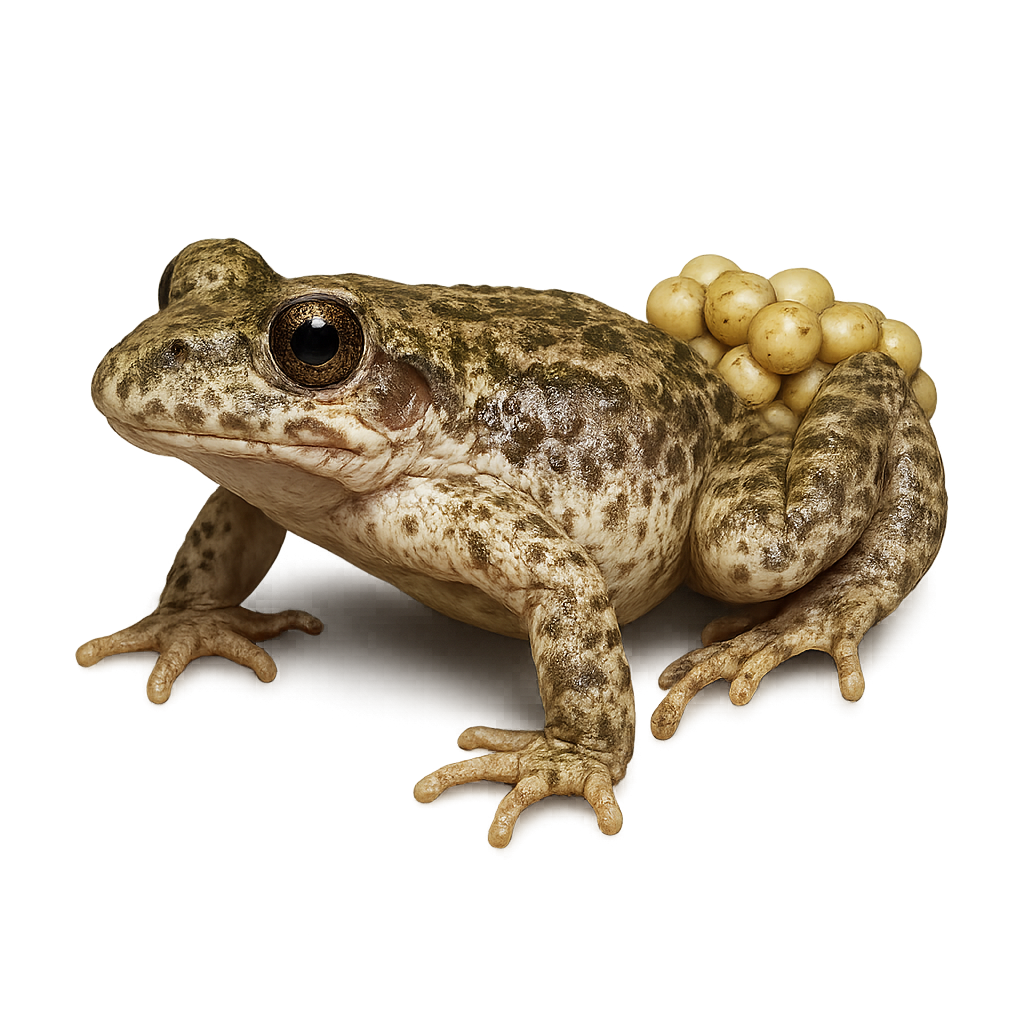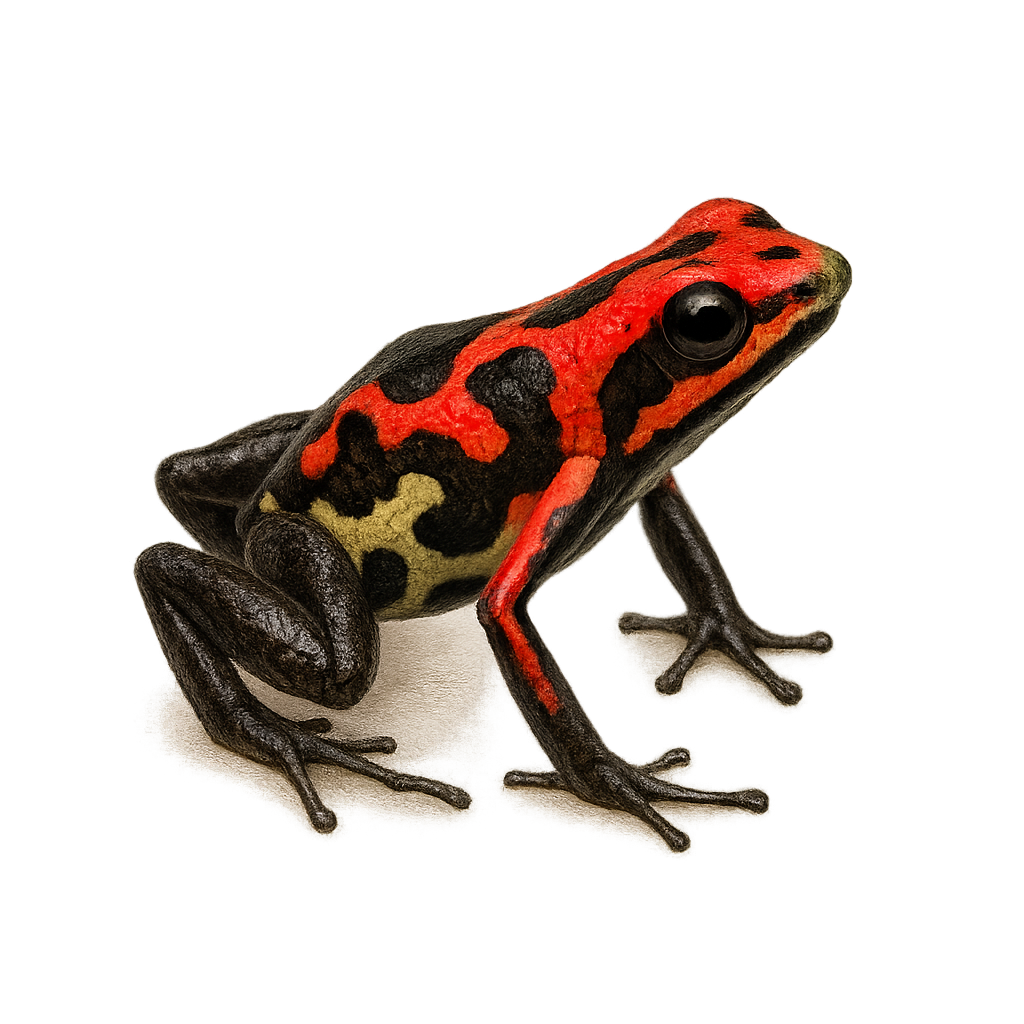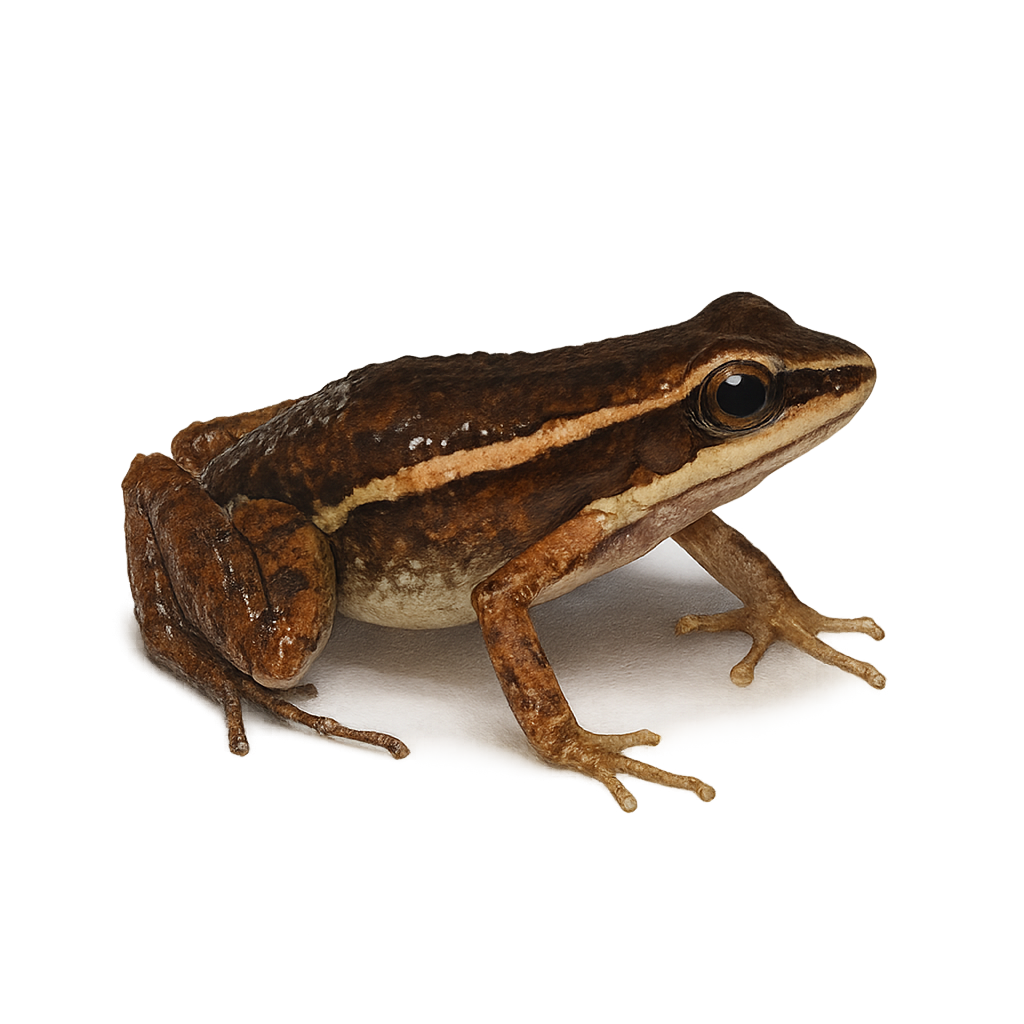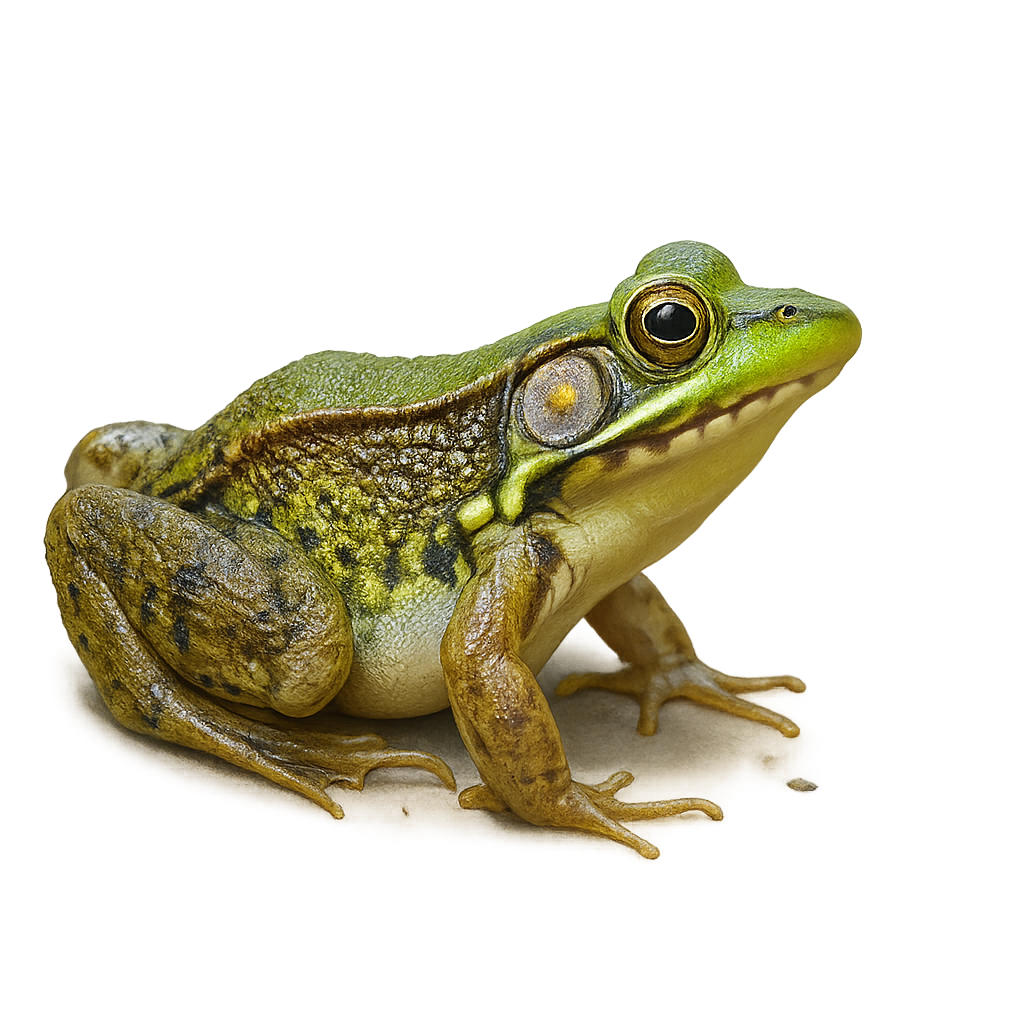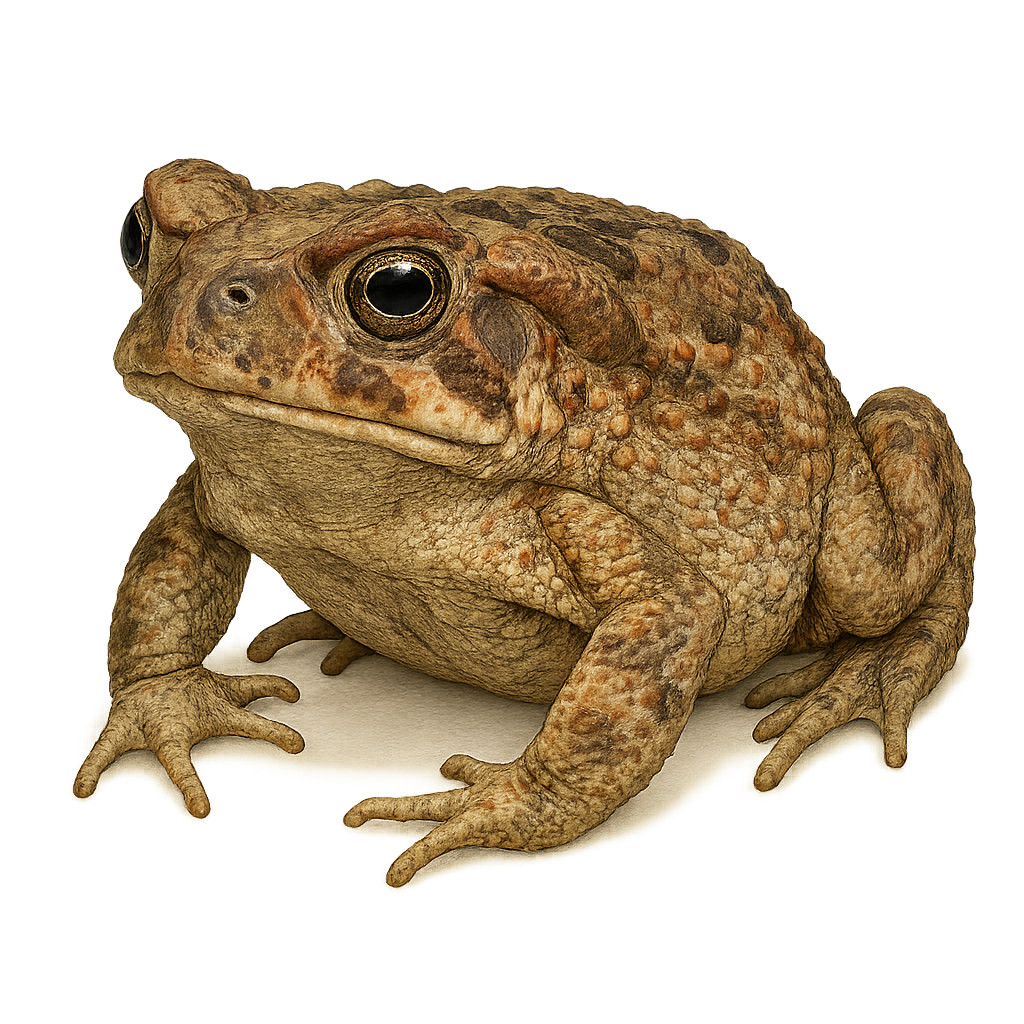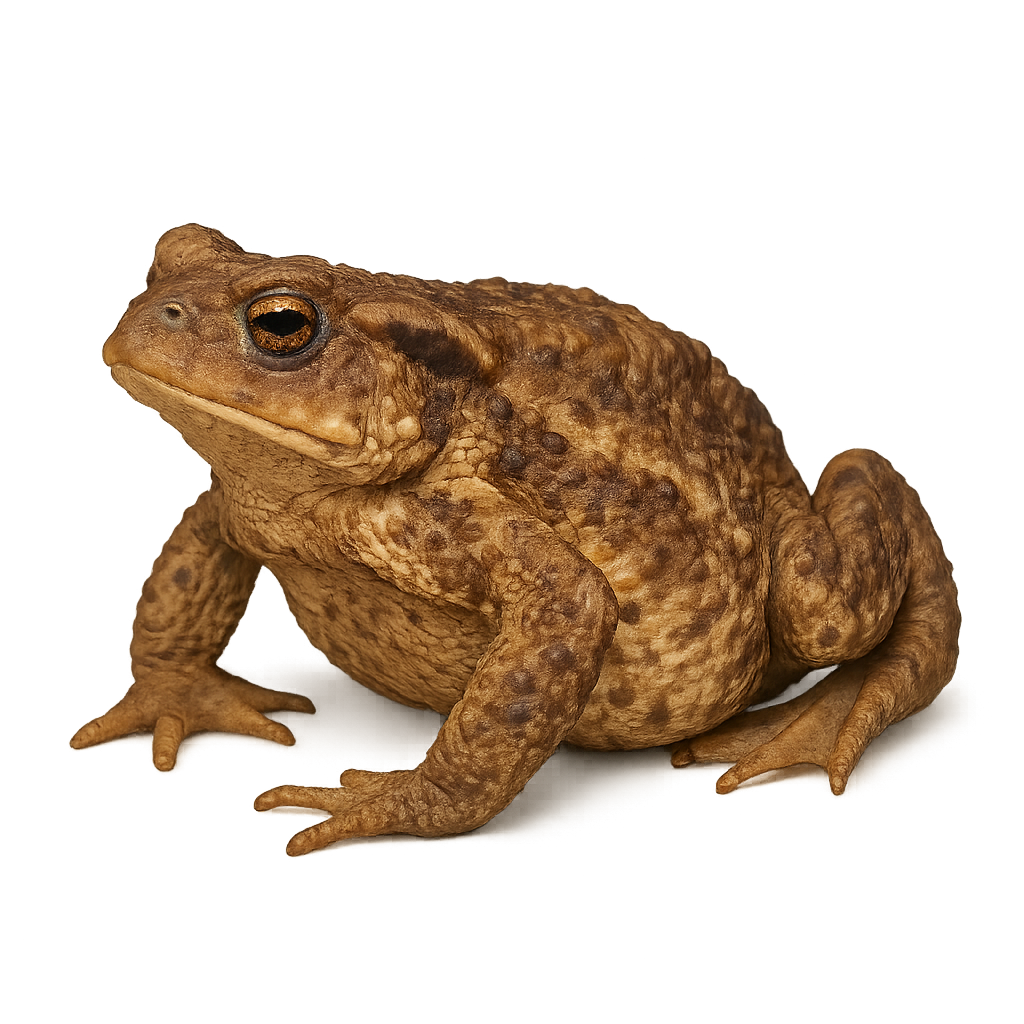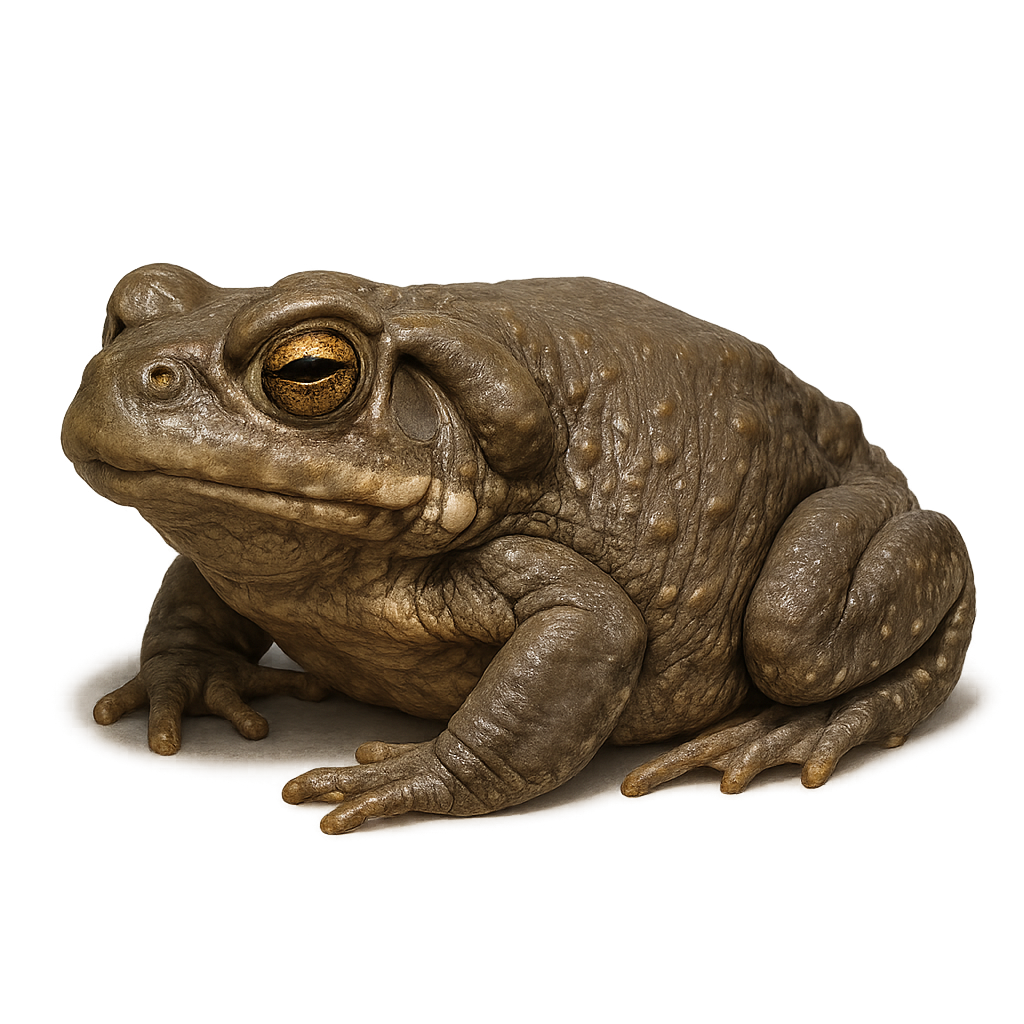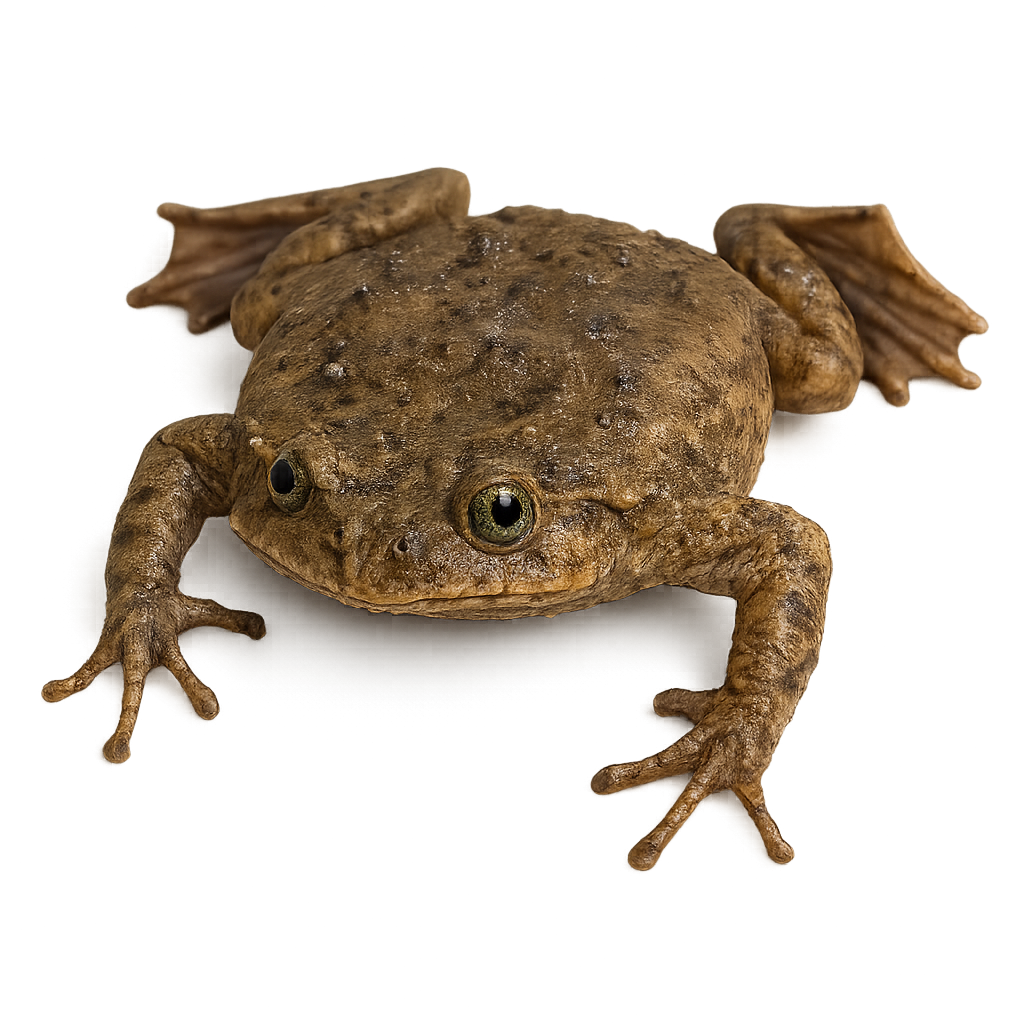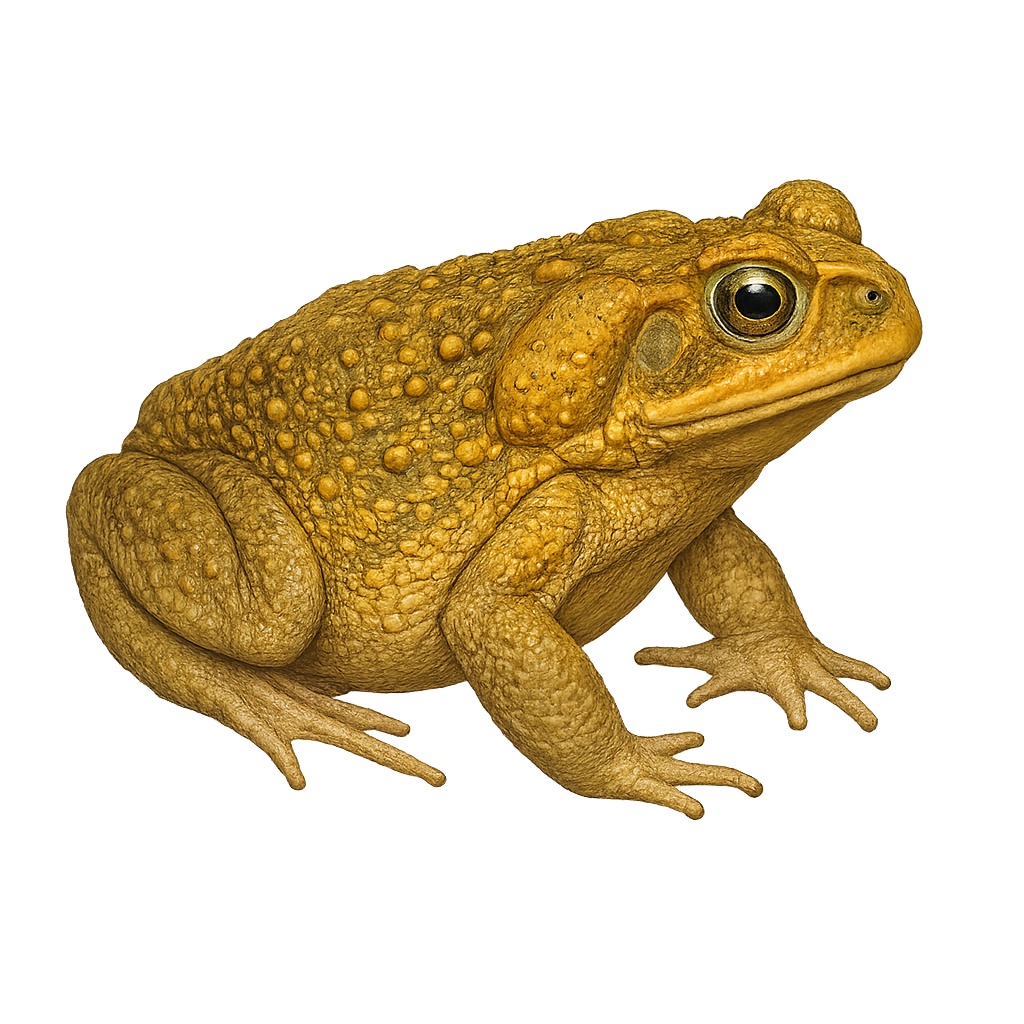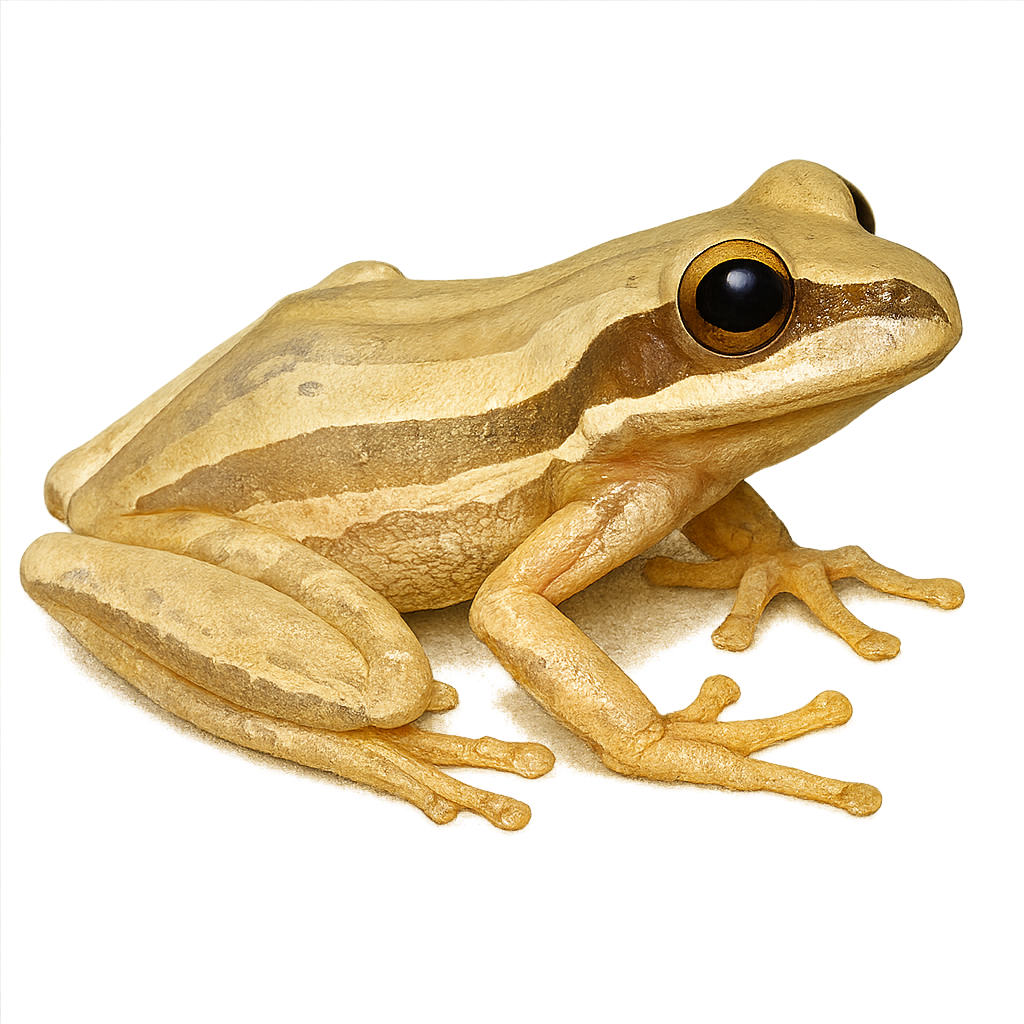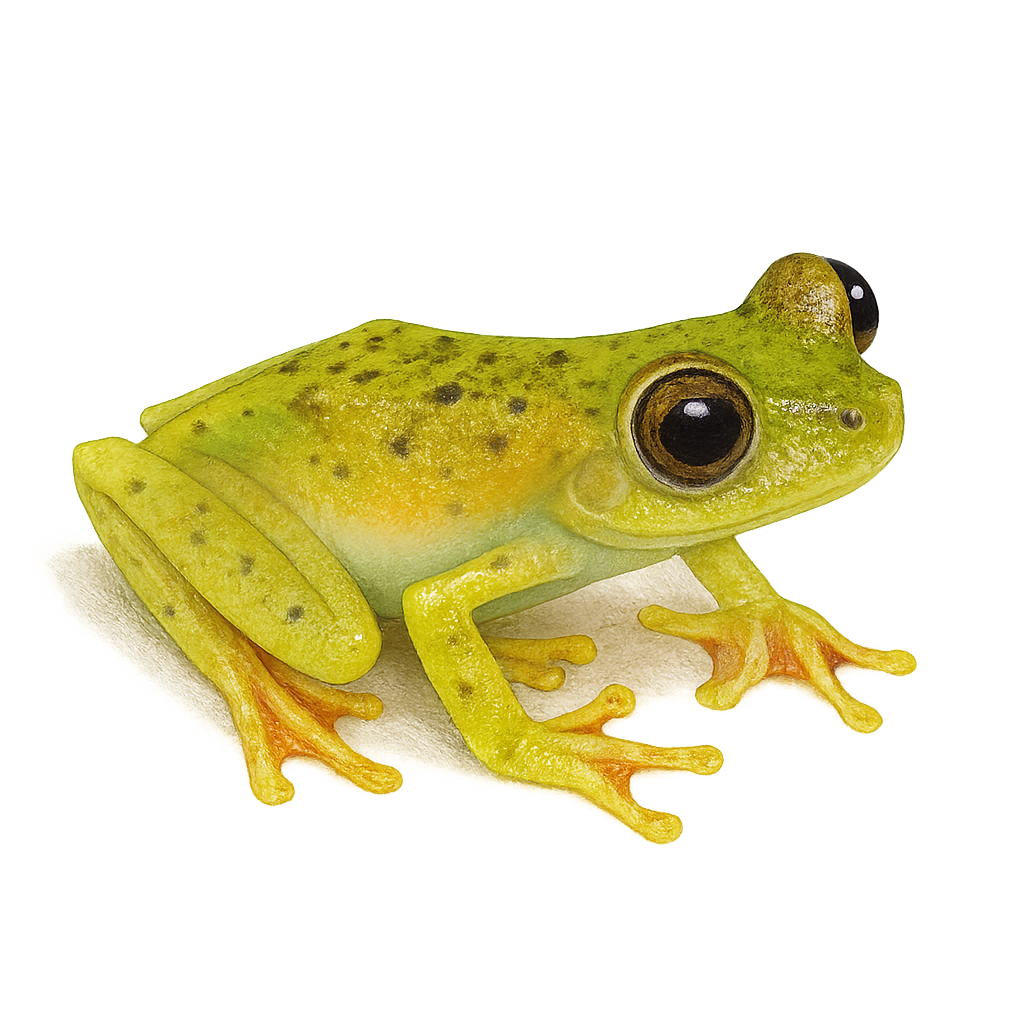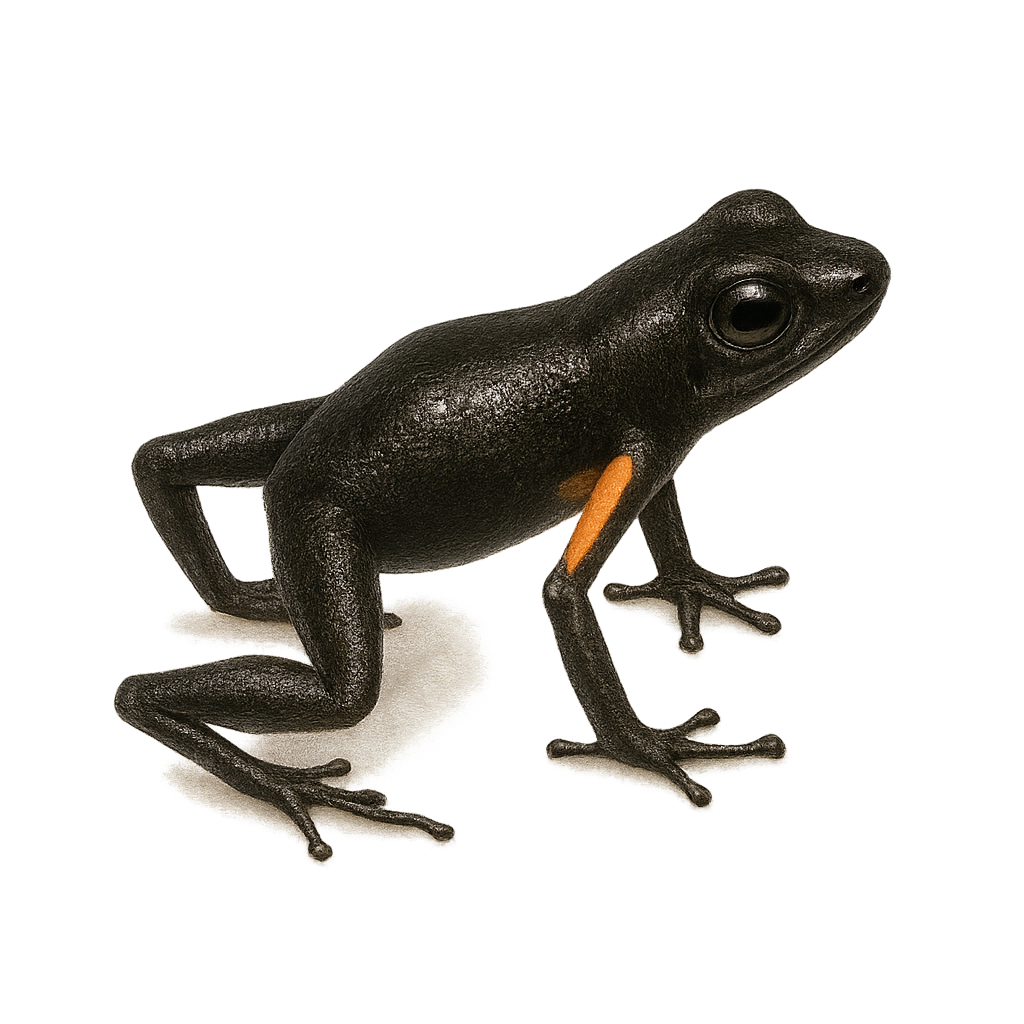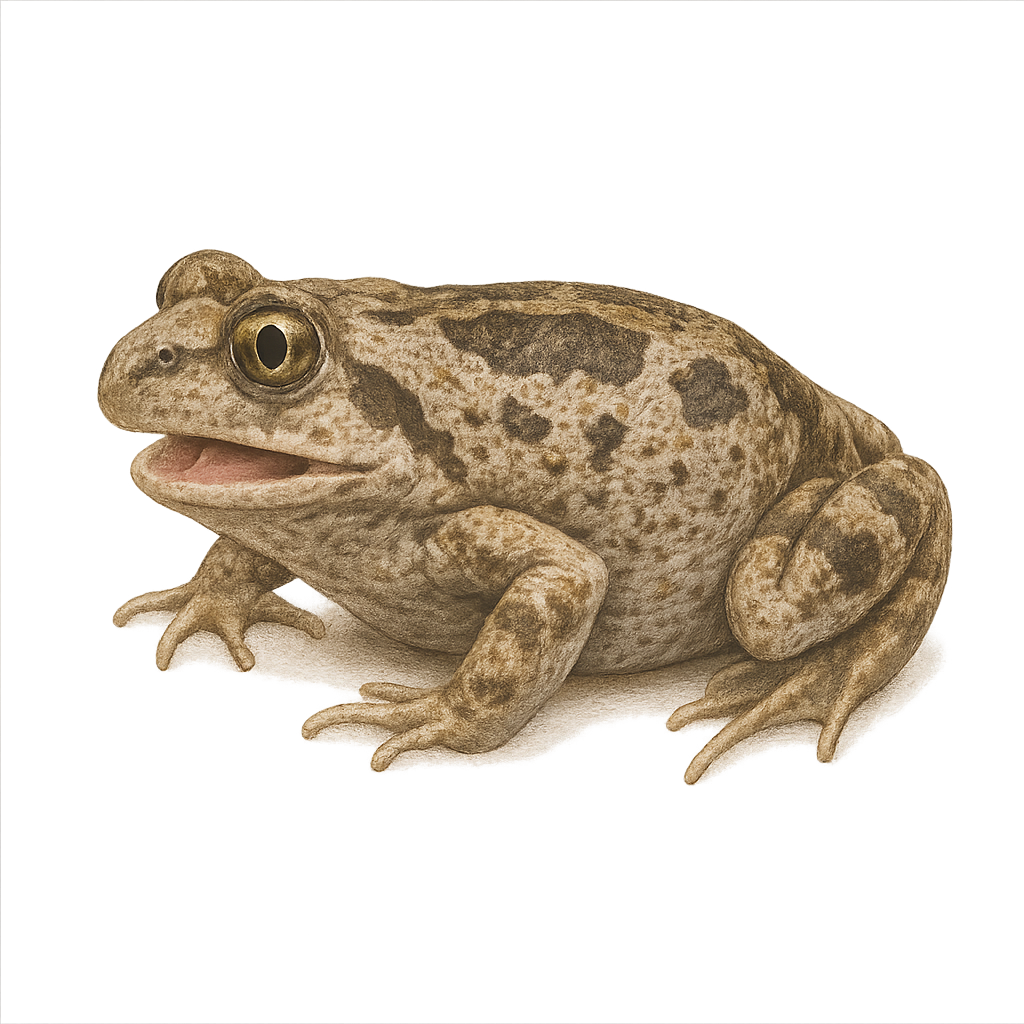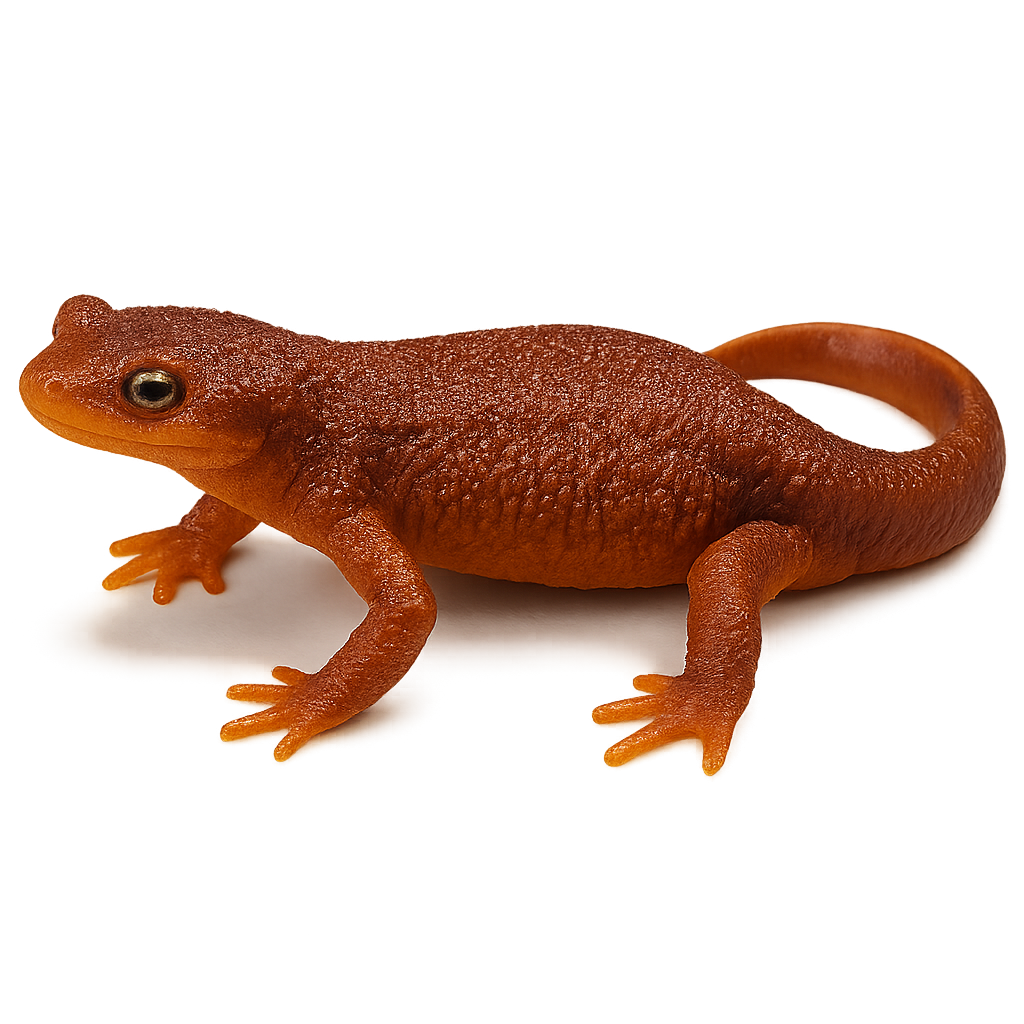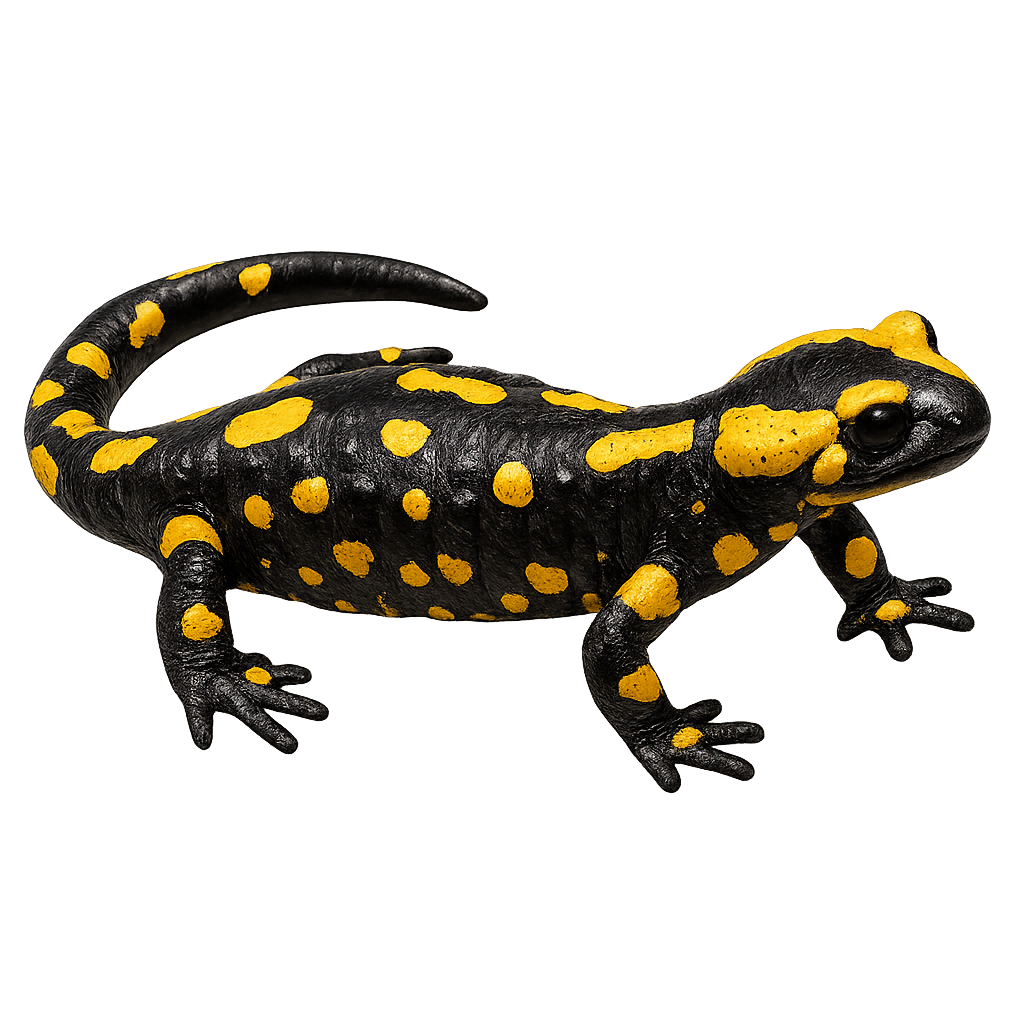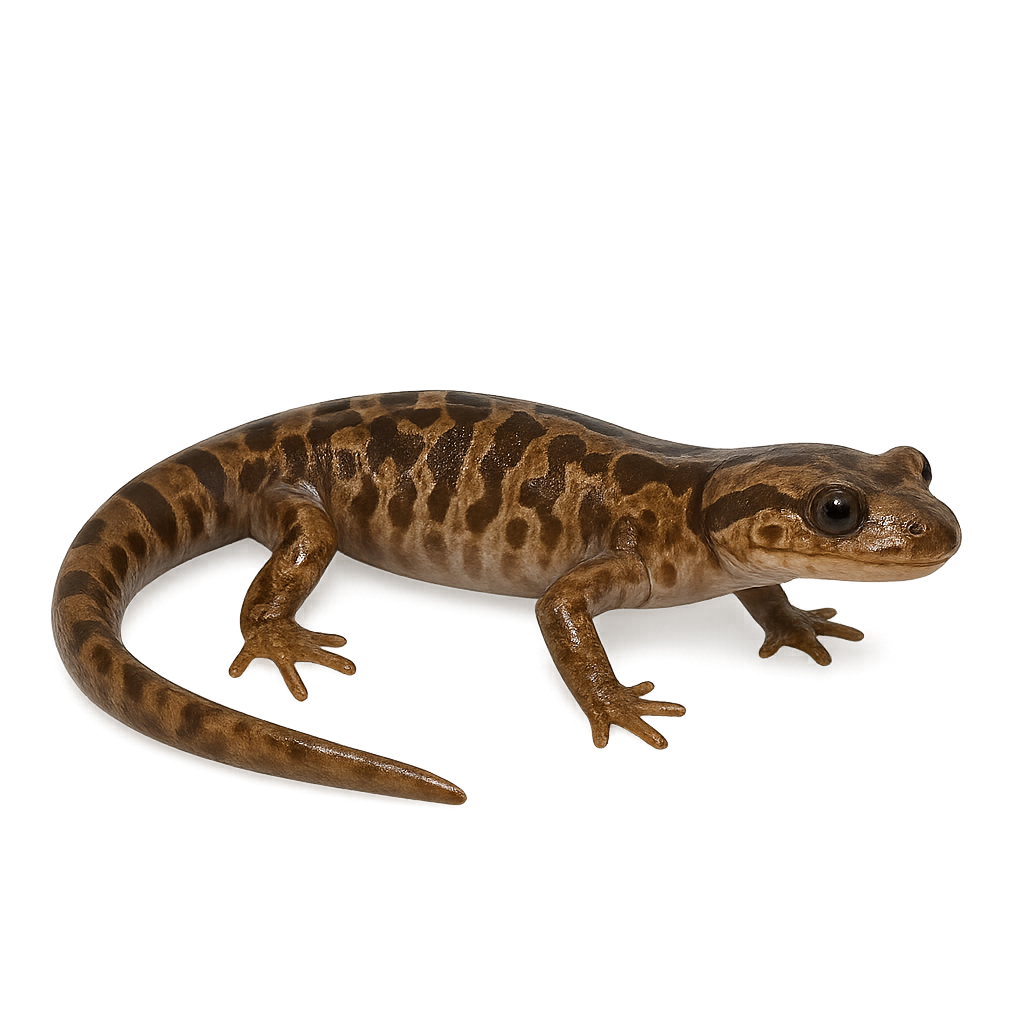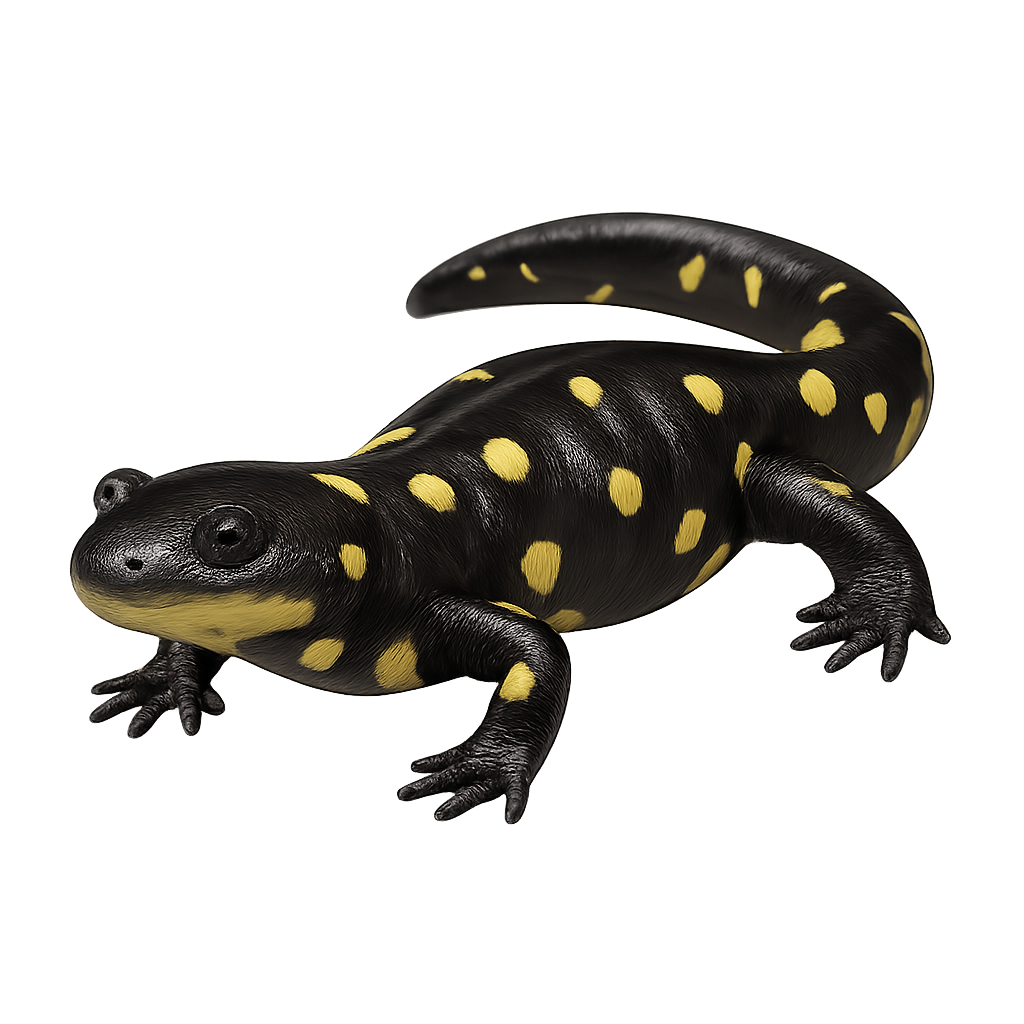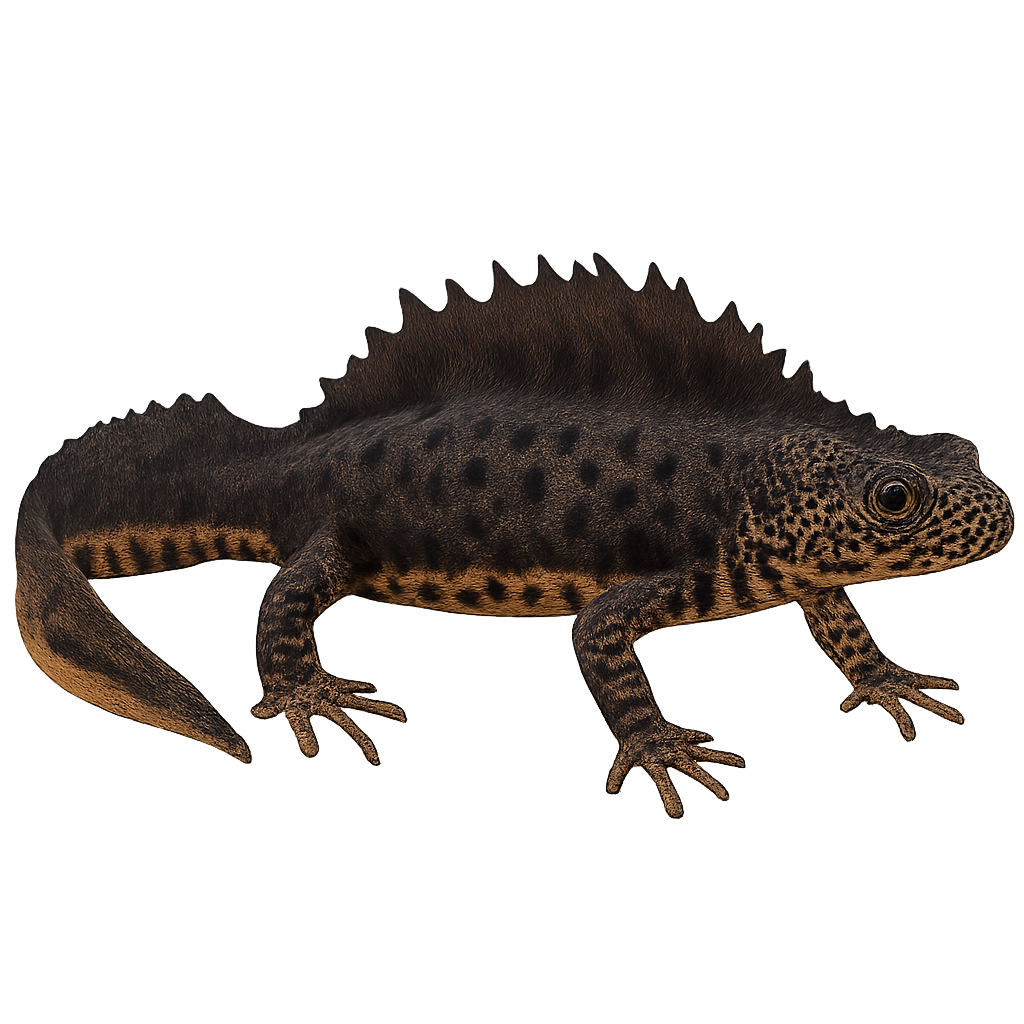The common midwife toad is a stocky amphibian of 5–6 cm, with smooth olive-grey dorsal skin and a spotted throat. A terrestrial species of temperate Europe, it inhabits forest edges, meadows and urban areas near water bodies, where females lay eggs that males carry in strands until hatching.
The Cauca poison frog is a small, brightly colored frog native to the humid rainforests of Colombia. Its skin features vivid and contrasting patterns, often red and black, serving as a warning to potential predators of its toxicity. This diurnal species primarily feeds on small insects and other arthropods, playing a crucial role in the ecosystem by regulating insect populations. Harlequin Poison Frogs are known for their territorial behavior, with males vigorously defending their space against intruders. Their reproduction involves parental care, with males carrying tadpoles on their backs to suitable water points. Unfortunately, this species is threatened by deforestation and habitat loss.
The Cauca poison frog is a small frog from the Dendrobatidae family, native to the humid tropical forests of South America. It is characterized by its smooth skin and bright colors, often a mix of green and brown, which allow it to blend effectively into its natural environment. This species is generally active during the day and primarily feeds on small insects. It is known for its territorial behavior, with males vigorously defending their space against intruders. Reproduction mainly occurs during the rainy season when conditions are optimal for tadpole development.
The Common rocket frog, scientifically known as Colostethus inguinalis, is a small amphibian species distinguished by its vibrant coloration. It features a bright yellow belly contrasting with a brownish back, often speckled with dark spots. This frog is primarily terrestrial and inhabits the humid tropical forests of Central and South America. It is often observed near water bodies where it breeds. Its distinctive call is an essential means of communication, especially during the breeding season. Although discreet, it plays a crucial role in the ecosystem by regulating insect populations.
The cane toad (Rhinella marina) is a robust amphibian reaching up to 23 cm in total length, with a stocky body covered in rough, warty skin colored olive to deep brown. Native to tropical wetlands of Central and South America, it inhabits marshes, rice fields, slow-flowing streams and roadside ditches, preying on insects, spiders and small vertebrates. An invasive species introduced across multiple continents, it secretes potent skin toxins to deter predators. Males vocalize in resonant choruses during the rainy season. Breeding occurs in large communal pools, where females deposit thousands of eggs in gelatinous strings that hatch in two to five days. After hatching, tadpoles metamorphose rapidly and juveniles may live over ten years.
The common toad is a sturdy terrestrial amphibian of 8–13 cm with a warty olive-brown back and a yellowish spotted belly. It inhabits damp meadows, open woodland edges and gardens, feeding on insects, spiders and worms captured on the ground. During the breeding season, males emit a low, croaking call from the water’s surface to attract females, which lay strings of eggs in double rows.
The Bufo alvarius, commonly known as the Colorado River Toad, is a fascinating species of toad found primarily in the arid regions of the southwestern United States and northern Mexico. This toad is particularly known for its large size, reaching up to 19 cm in length, and its smooth, moist skin, often speckled with dark spots. It is famous for the toxic secretions it produces, containing bufotenin, a psychoactive substance. These secretions are used by some predators as a means of defense. The Bufo alvarius is a nocturnal animal, preferring the cool hours of the night to hunt its prey, mainly insects and small invertebrates.
The Suriname Toad is a fascinating amphibian species, known for its unique appearance and extraordinary reproductive behavior. This flat and wide toad is often called the 'birthing toad' because of the way it carries its eggs on its back, where the tadpoles develop until they are ready to hatch. It primarily lives in slow-moving waters and swamps in the tropical forests of South America, particularly in Colombia, Venezuela, Suriname, and Guyana. Its flat body allows it to hide easily in aquatic substrate, and it is primarily nocturnal. Its skin is a brownish-green, and its appearance allows it to blend perfectly into its aquatic environment.
The cane toad, or Bufo marinus, is a large amphibian native to Central and South America. It can grow up to 24 cm in length and weigh over 1 kg. Its skin is rough and covered with glands that secrete a potent toxin used for defense against predators. This nocturnal toad primarily feeds on insects but can also consume small animals. Introduced in several regions to control agricultural pests, it has become an invasive species, notably in Australia, where it has caused ecological imbalances. Its ability to adapt to various environments makes it a fascinating subject of study for biologists.
The Colostethus subpunctatus is a small-sized frog species commonly found in the humid tropical forests of South America. It is characterized by its smooth skin and color patterns ranging from brown to green, often with lighter spots. This species is particularly interesting for its parental care behavior, where males carry tadpoles on their backs to safe water points. It prefers habitats near streams or wet areas, where it can easily hide under leaves or rocks. Although not endangered, it is sensitive to environmental changes, especially deforestation.
The Corsican Mountain Newt, Euproctus montanus, is an endemic species of the island of Corsica. It is characterized by its smooth skin and brownish coloration, often speckled with darker spots. Typically measuring between 10 and 15 cm, it primarily inhabits clear streams and wet areas of the Corsican mountains. This species is well adapted to cool and humid environments and is often found at altitudes between 600 and 2000 meters. The Corsican Mountain Newt is an important indicator of water quality, as it is very sensitive to pollution. Unfortunately, it is threatened by habitat degradation and climate change.
Boana latistriata, commonly known as the Cope's Eastern Paraguay Treefrog, is a species of amphibian in the Hylidae family. It is primarily found in the humid tropical forests of South America, particularly in Brazil. This frog is distinguished by its broad, dark lateral stripes that contrast with its green skin. It is generally nocturnal, feeding on insects and other small invertebrates. Its ability to adhere to vertical surfaces with its adhesive toes allows it to move easily in its arboreal habitat. Although its conservation status is concerning, it is still relatively widespread in some areas.
Boana rufitela is a tree frog known for its distinctive red spots on a bright green background, allowing it to blend seamlessly into its natural habitat. It is primarily found in the humid tropical forests of South America, where it resides in the tree canopy. This species is nocturnal, meaning it is mostly active at night, feeding on insects and other small invertebrates. Its skin is slightly toxic, serving as a defense mechanism against predators. The Boana rufitela plays a crucial role in the ecosystem by regulating insect populations and serving as prey for other animals. Although its population is stable, deforestation poses a potential threat to its habitat.
Andinobates abditus is a small, brightly colored frog belonging to the Dendrobatidae family. Native to the humid tropical forests of Ecuador, this species is known for its vivid colors that serve as a warning to potential predators. It typically measures between 1.5 and 2 cm in length. Like many frogs in this family, it possesses potent skin toxins. These frogs are primarily terrestrial and are often found in leaf litter. They are diurnal and primarily feed on small insects. Their reproduction involves parental care, where males carry tadpoles on their backs to water bodies. This species is currently classified as vulnerable due to habitat loss.
The Common Spadefoot, scientifically known as Pelobates fuscus, is a discreet and fascinating amphibian. It is characterized by its smooth skin and brownish coloration, often speckled with dark spots. This toad has powerful hind legs adapted for digging into the soil, allowing it to quickly burrow when threatened. Primarily nocturnal, it emerges from its burrow to feed on insects and other small invertebrates. Its natural habitat includes sandy areas and wet meadows, providing ideal conditions for reproduction. Although its population is stable, it is sensitive to habitat destruction and water pollution.
The Chirique-Flusse Treefrog, scientifically known as Boana pugnax, is a captivating amphibian species native to the tropical rainforests of South America. It is known for its adaptability to various aquatic environments, from rivers to swamps. Its skin, often green with brown hues, provides excellent camouflage among leaves and branches. Males are noted for their loud calls, used to attract females during the breeding season. This species is primarily nocturnal, feeding on insects and other small invertebrates. Although its conservation status is not currently concerning, habitat destruction poses a potential threat.
The California Newt, Taricha torosa, is a fascinating amphibian native to the west coast of the United States. It is distinguished by its rough skin and bright coloration, ranging from dark brown on the back to bright orange on the belly. This coloration serves as a warning to potential predators, as it secretes a powerful toxin called tetrodotoxin. Typically measuring between 12 and 20 cm, it primarily inhabits moist forests, grasslands, and riparian zones. During the breeding season, it migrates to ponds and streams to lay its eggs. Although primarily terrestrial, it returns to water to breed. Its ability to regenerate body parts makes it an interesting subject of study for scientists.
The Corsican Salamander, or Salamandra corsica, is an amphibian endemic to the island of Corsica. It is characterized by its black skin adorned with irregular yellow spots, a pattern that varies among individuals. This salamander prefers humid and shaded habitats, such as oak and pine forests, as well as rocky areas near watercourses. It is primarily nocturnal, hiding under stones or in crevices during the day. Its reproduction is viviparous, with females giving birth to aquatic larvae. Although its population is stable, it is sensitive to environmental changes and water pollution.
The Chinese giant salamander, Andrias davidianus, is the largest amphibian in the world, reaching up to 1.8 meters in length. It primarily inhabits mountain rivers and lakes in China. Its skin is rough and dark brown, allowing it to blend into its aquatic surroundings. It is mainly nocturnal and feeds on fish, crustaceans, and insects. Unfortunately, this species is critically endangered due to habitat loss and water pollution. The Chinese giant salamander is also threatened by illegal hunting for its meat, considered a delicacy.
The Coastal Giant Salamander, Dicamptodon tenebrosus, is a fascinating species of salamander primarily inhabiting the moist forests of the Pacific Northwest in North America. Known for its large size, it can grow up to 35 cm in length. Its skin is typically dark brown with lighter marbled patterns, allowing it to blend effectively into its natural surroundings. This salamander is mostly nocturnal, feeding on invertebrates, small fish, and occasionally small mammals. It plays a crucial role in the ecosystem by regulating insect populations and serving as prey for other animals. Although relatively tolerant of human disturbances, habitat destruction poses a threat to its survival.
The California tiger salamander is a stout-bodied salamander 15–20 cm long, with a black dorsum marked by yellow or cream spots. Endemic to grasslands, agricultural lands and open woodlands of central and coastal California, it depends on fishless temporary ponds to breed, migrating nocturnally from upland burrows. Adults shelter in rodent burrows during dry periods.
The crested newt is a urodele amphibian, 9–11 cm long, with a dark brown back spotted with bright orange and a black belly. It inhabits temporary ponds, ditches, and woodland pools in temperate Europe, feeding on aquatic insects and small crustaceans with its rapid tongue. During the breeding migration, males develop a prominent dorsal crest and perform a nuptial dance in front of females.


